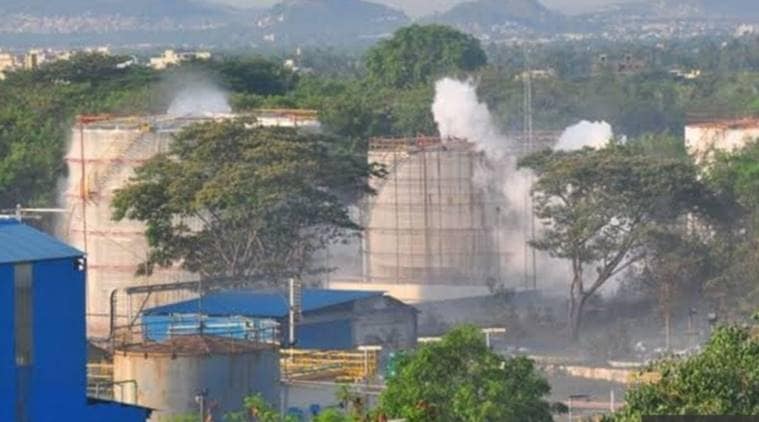- India
- International
Vizag Gas Leak: NGT panel lists string of lapses, indicts LG officials, AP depts
The committee listed a string of technical and safety lapses which resulted in the Styrene vapour leak.
 The gas leak from the LG Polymers plant in Visakhapatnam happened on May 7 (Twitter/Srijana Gumalla)
The gas leak from the LG Polymers plant in Visakhapatnam happened on May 7 (Twitter/Srijana Gumalla)
A committee tasked by the National Green Tribunal to inquire into the gas leak from the LG Polymers plant in Visakhapatnam on May 7 has concluded that shortage of an inhibitor to control the temperature of the Styrene Monomer storage tank led to the failure of containment efforts, resulting in the leak that left 12 people dead and landed 500 others in hospitals.
In its report submitted on May 28, the committee, headed by Justice (retd) B Seshasayana Reddy, said the plant’s managing director, safety officer, safety department, production department should be held accountable for lapses together with the departments of industries, factories and boilers which conduct periodic inspection.
The committee listed a string of technical and safety lapses which resulted in the Styrene vapour leak. This is what it found:
* There was insufficient Tertiary Butyl Catechol (TBC) used as an inhibitor chemical in the Styrene tank to control its temperature.
* TBC is ineffective above 52 degrees Celsius. Stored in liquid form under 20 degrees Celsius, Styrene evaporates with rise in temperature in a process called auto-polymerisation. Retarders and inhibitors are used to slow down any runaway chemical reaction.

Read | SC permits LG Polymers to have access to its Vizag plant
* There was no other retarder or inhibitor at the facility. A short-stopper chemical should have been added but LG Polymers did not consider this and did not store any.
* Every evening, the refrigeration system connected to the tank was being switched off since ambient night temperatures did not require cooling. This too contributed to the heat build-up in the tank.
* TBC had not been topped up in the affected tank since April 1 since there was no stock at the site.
* Without adequate TBC in the tank, there was rise in temperature in the tank and the Styrene started polymerising slowly. By May 7, the hotspot had reached critical mass.
* “The unit failed to assess the situation due to lack of handling experience by trained man-power,’’ the report stated.
* “The root cause appears to be the lack of experience of LG Polymers India and their Korean principal, LG Chem, in monitoring and maintaining full tanks of Styrene that were idled for a long period of several weeks without operation. M6 is an old tank in design terms, this possibly contributed to the problem,’’ the report stated.
* The M6 tank, which had 1830 tonnes of Styrene, was an old one and did not have temperature sensors at the middle and top. There was one sensor at the bottom of the tank where refrigeration was provided. Due to this, the building-up of temperature at the top of the tank was not noticed. “This shows the clear-cut negligence on part of the factory,’’ the report stated.
* “As per CCTV records, the emission started at 2:42 hours from M6 tank,’’ the report stated. About 800 tonnes of Styrene vapour escaped from the tank. No alarm went off when the vapour began leaking and auto sensors of Styrene failed to detect the leak.
* “There is no interlocking system arrangement between the temperature and refrigeration system,’’ the report stated, adding that had such a system been in place, the rise in temperature would have started the refrigeration.
* There was no external water spraying arrangement over the storage tank to retard any vapour leak. “Efforts to control the temperature were hampered because the chillers servicing the tank were switched off at 5 pm the previous evening as per routine site practice. There was also no automated sprinkler arrangement for vapour loss as this had never been anticipated; the fire water sprinklers had to be manually activated,’’ the report stated. Due to the toxic vapour cloud around the tank, officials could not take hoses near the tank to spray water.
* The public siren was not sounded because it was a manual system, located at a place which had become inaccessible due to the vapour cloud.
Apr 19: Latest News
- 01
- 02
- 03
- 04
- 05






































